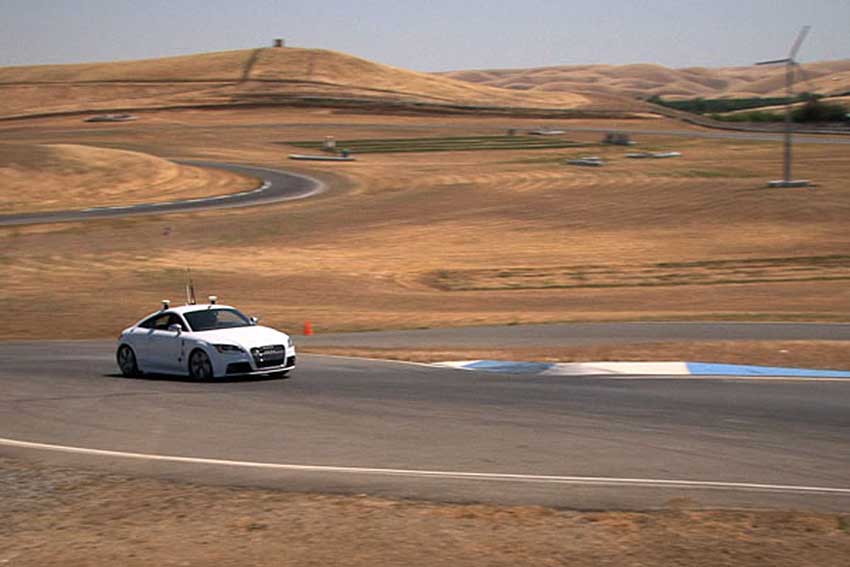Researchers at Stanford University have put a robotic Audi TTS on the track at Thunderhill Raceway in California, where it performed in a remarkable fashion. The driverless car, nicknamed Shelley, managed to lap the 4.8 kilometer long racetrack fully autonomously at high speed in a time less than 2:30 minutes, a few seconds shy to performances put up by seasoned human race drivers. Unlike other autonomous robotic cars Shelley cannot navigate in a real world variable environment, it is not capable of avoiding obstacles and identifying road signs, it was set up strictly for the track, relying on GPS and internal sensors to stay on track and perform at its own physical limits.

Driverless Audi TTS on the racetrack | Photo: Stanford/Steve Fyffe
“We need to know what the best drivers do that makes them so successful […]”In other words, it is emphasized that future research will be in the direction of quantifying reactions and better understanding behaviors of human drivers.
— Prof. Christian Gerdes
The autonomous robotic Audi TTS project is the result of collaboration between the Dynamic Design Lab of Stanford University and the Volkswagen Electronics Research Lab (ERL) and made its debut back in 2009, at the Pikes Peak Hill Climb, when it managed to travel the entire route on its own at speeds no higher than 65 km/h (40 mph). The self-driving car got the name Shelley after the famous top-ranking rally driver Michèle Mouton, the first female driver to win the Pikes Peak International Hill Climb competition with a record time, back in 1985.